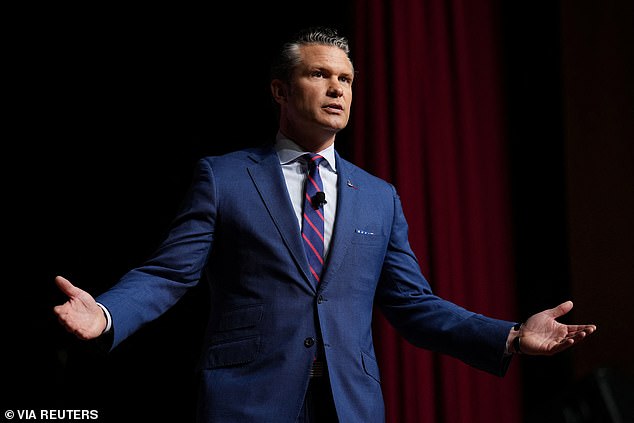Pete Hegseth’s flight was forced to make an emergency landing over the Atlantic this week, just days after high-stakes discussions on the Russia-Ukraine war at a NATO summit.
The Boeing C-32A carrying the US Secretary of War encountered a crack in its windshield while flying Wednesday, prompting a precautionary stop at RAF Mildenhall in England.
Chief Pentagon Spokesman Sean Parnell reassured the public on X, confirming that the plane “landed based on standard procedures and everyone onboard, including Secretary Hegseth, is safe.”
NATO Summit Highlights and Hegseth’s Stern Warning
The incident follows Hegseth’s recent appearance at NATO meetings in Brussels, where he issued a firm warning to Vladimir Putin.
He told leaders that the United States is prepared to employ all military tools at its disposal to end the conflict if peace remains elusive.
Hegseth emphasized that America sees two key deterrents against Russian aggression: “a lethal, capable and European-led NATO” and a “combat credible Ukrainian military.”
His remarks marked a shift from his February stance, when he suggested US attention might pivot away from Europe to other global challenges.
Rising Electronic Warfare Concerns in Europe
The emergency landing comes amid growing concerns over Russian electronic interference.
Several European defense ministers have recently faced GPS jamming while traveling to discuss the Ukraine conflict.
In late September, European Commission President Ursula von der Leyen’s plane encountered GPS interference over Bulgaria.
Shortly afterward, Spain’s Defense Minister Margarita Robles’ military jet experienced similar disruptions near Kaliningrad, and the UK’s Defense Secretary Grant Shapps’ aircraft faced GPS jamming returning from Poland.
Analysts suspect these incidents are linked to Russian electronic warfare tactics.
Trump’s Shifting Approach to Russia and Ukraine
President Trump, riding recent diplomatic successes, has taken a harder stance toward Russia while signaling support for Ukraine.
His August sit-down with Putin in Alaska initially caused alarm in Kyiv and across Europe, but Trump has since adopted a tougher approach, declaring Russia a “paper tiger” and recognizing it as the war’s aggressor.
After months of pressuring Ukraine to compromise, Trump is now hosting Ukrainian President Volodymyr Zelenskyy at the White House on Friday.
Discussions will likely include the potential transfer of long-range Tomahawk missiles to Kyiv, allowing deeper strikes into Russian territory—a plan previously resisted over concerns about escalation.
Stakes Rising for US-Ukraine Relations
Trump’s evolving strategy underscores the high stakes of US-Ukraine relations.
Sources indicate the potential missile transfer is back on the table, and the two leaders are expected to discuss it in detail during their White House meeting.
Trump has also made it clear that the weapons could be sent if Russia refuses to engage in peace negotiations.
The Pentagon has been contacted for comment as the situation continues to unfold, with European allies closely watching both diplomatic and military developments.
Share on Facebook «||» Share on Twitter «||» Share on Reddit «||» Share on LinkedIn